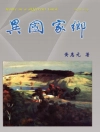The Kama Sutra of Vatsyayana is an ancient Indian text that transcends mere sexual instruction, delving into the holistic nature of love, relationships, and the art of living. Composed in the 3rd century CE, Vatsyayana’s work intricately weaves philosophy, psychology, and social norms into a discourse on desire and the pursuit of pleasure, reflecting the complexities of human experience. Its literary style is characterized by elegant prose and poetic verse, enriched by metaphor and allegory, situating the text within a rich tradition of Sanskrit literature. The Kama Sutra serves as a crucial cultural artifact, illuminating the relational dynamics of its time and offering insight into the moral frameworks that governed human connections in ancient India. Vatsyayana, a philosopher and scholar, draws from an extensive array of sources, including various schools of thought on love and duty, which likely influenced his approach to the subject. His work is both a culmination of earlier erotological texts and a critical reflection on the societal values of his era. Living in a context where pleasure was considered a legitimate pursuit alongside duty (dharma) and material success (artha), Vatsyayana’s perspective integrates spiritual wisdom with pragmatic guidance, illustrating the significance of desire in human life. Readers seeking a profound understanding of the interplay between pleasure, love, and societal responsibilities will find The Kama Sutra an enlightening and enriching text. It is not merely a manual on sexual experience but a philosophical treatise that invites reflection on personal relationships, ethical living, and the nature of happiness. This edition serves both scholars and general readers alike, offering timeless insights that continue to resonate in contemporary discussions of intimacy and human connection.
عن المؤلف
Vatsyayana, an ancient Indian philosopher and scholar, is most renowned for his seminal work ‘The Kama Sutra of Vatsyayana’. Though little is known about his life, scholars estimate he lived during the Gupta period, around the 3rd century CE. His magnum opus, the Kama Sutra, is often misperceived in the modern era to be merely an erotic manual, yet it is, in fact, a sophisticated treatise exploring the art of living, including the nature of love, family life, and other aspects of human existence. The philosophy embedded within the text is deeply rooted in the Hindu tradition, reflecting concepts such as dharma (duty), artha (prosperity), kama (pleasure), and moksha (liberation). Vatsyayana’s work transcends the boundaries of mere carnality, providing guidance on virtue and propriety while debunking the notion that spirituality and pleasure are mutually exclusive. Not much else is recorded about Vatsyayana’s personal or scholarly life, and his existence is largely deduced from his contributions through ‘The Kama Sutra’. However, his work has continued to be influential throughout centuries, attracting scholarly attention and scholarly commentaries, and it remains a cornerstone in the study of Eastern philosophies on love and sexuality. One must approach his writings with an openness to the depth of knowledge and the historical and cultural context in which Vatsyayana lived to fully appreciate his contributions to literature and philosophy.












